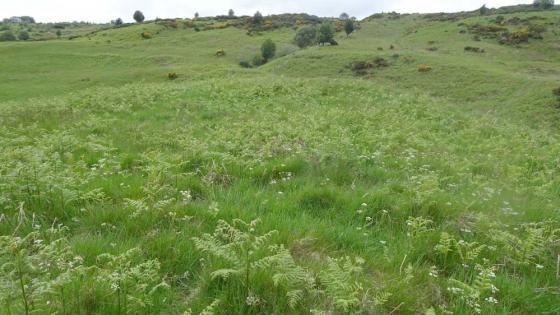
Close up of carving

Close up of carving

Close up of carving with my foot for sizing.

Taken August 1997: This gives you a good idea of the type of terrain that surrounds you when you visit these stones. The scenery was beautiful on the north coast, and there are so few people up there. This really is a part of Scotland that not many people seem to visit. Not a coach party in sight!

Taken August 1997: This photo is a detail (taken from the other one and tweaked a bit) to try and show up the markings on the stone. The sun was so bright that there was hardly any contrast, so the grooves in the rock are hardly discernable.
Visited this site late October so thankfully it was free of horseflies! The grooves are quite prominent just a shame to see it lies in a puddle of water on its side, I would love to get a look at the other side of this stone as it looks to me to be a fallen standing stone.
We visited this stone (and it’s neighbour) in August 1997 and were attacked by horseflies as soon as we got there. It was like something out a B-movie. We were on my motorbike, so we ended up keeping all our gear on to avoid getting bitten. It was stupidly hot though, so stomping around the heather with our leathers and crash helmets on, we were boiling.
The stone is on the left-hand side of the road coming from Kinloch, and it’s not too tricky to find.
Here’s what the RCAHMS database has to say about the stone:
“An incised stone, 1.9m long and 0.2m deep, found during field investigation. It lies N-S and measures 0.9m across at the N end, tapering to 0.5m at the S.”
“The marks incised upon this stone bear no relationship to known Pictish or Early Christian symbols; they form no cohesive pattern or identifiable shapes.”
Strangely, no mention of horse flies on the database.










































